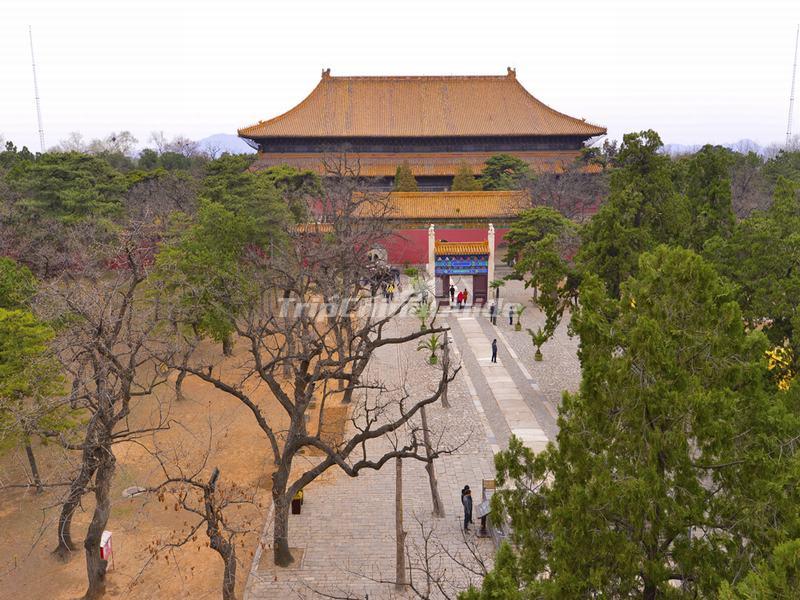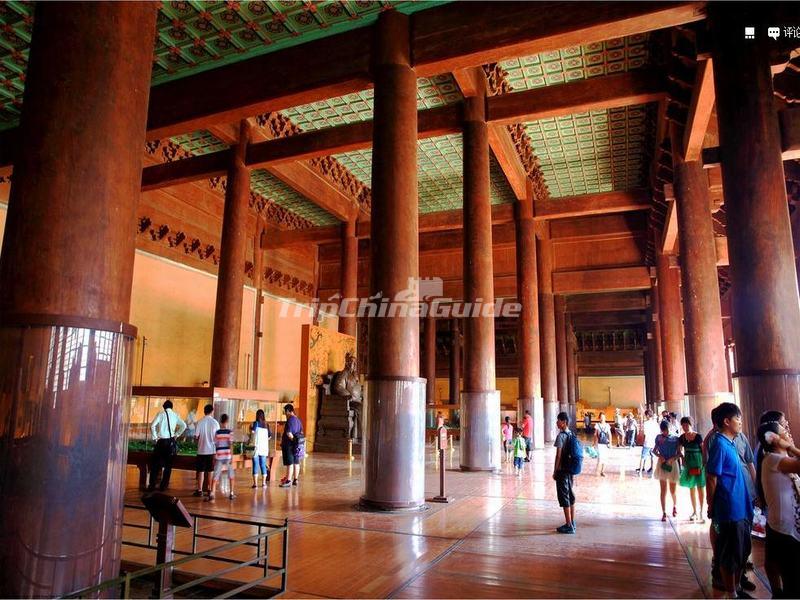Changling Tomb
The first built of the Thirteen Ming Tombs, the Changling Tomb buried the Ming Emperor Yongle and his empress Xu. It was the largest (occupying 10 hectares), most advanced and best preserved imperial mausoleum, using the best material. Built in 1409, even the underground palace of the massive project took four years to complete. Having undergone the weathering of 600 years, the Changling Tomb remains intact and resplendent and magnificent.
Its design followed that Xiao Mausoleum for Emperor Zhu Yuanzhang the dynasty founder: the front is a rectangular courtyard and the rear is the round Treasure Dome (tomb mound), led in by 15 km Sacred Way from south to north. The Sacred Way extends from the stone archway at the mausoleum entrance straight forward to the gate of the mausoleum palace as the axis of the entire mausoleum and the symbol of the supreme majesty of the monarch. Northward from the stone archway along the Sacred Way are arranged in order the Big Red Gate, Stele of Achievements and Virtues, Watch Post, and stone animals and figures, the line ending at an exquisite and unique Lingxing Gate, the entrance to the mausoleum proper.














